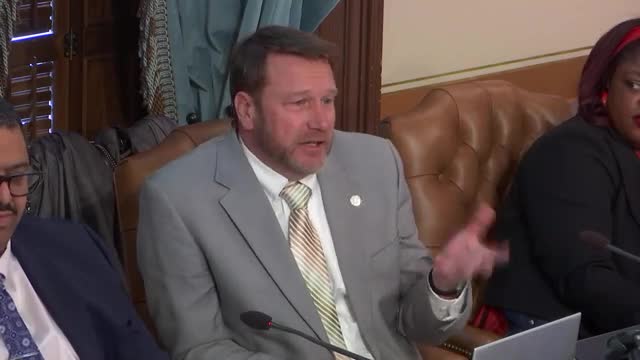Career service directors report 95% job placement for Michigan university graduates
April 16, 2025 | 2025 House Legislature MI, Michigan
This article was created by AI summarizing key points discussed. AI makes mistakes, so for full details and context, please refer to the video of the full meeting. Please report any errors so we can fix them. Report an error »

In a recent meeting focused on higher education and community colleges, Michigan lawmakers discussed the critical issue of student retention and job placement for graduates. A key point raised was the importance of understanding how many graduates remain in Michigan after completing their studies, as this directly impacts the state's economy and workforce.
Officials highlighted that Michigan is a net importer of students, meaning more students come to the state for education than leave after graduation. However, the exact percentage of graduates who stay in Michigan remains unclear, with officials promising to gather more data on this topic. This information is vital for shaping policies that encourage graduates to build their careers in the state.
Job placement rates for graduates were also a focal point of the discussion. Many universities report impressive job placement rates, with over 95% of graduates finding employment in their fields. This statistic underscores the effectiveness of Michigan's higher education institutions in preparing students for the workforce. However, the meeting revealed that earnings can vary significantly depending on the field of study, with some majors experiencing slower income growth compared to others, particularly in skilled trades.
The conversation also touched on the broader economic factors influencing graduates' decisions to stay in Michigan. Economic opportunities were identified as a primary motivator for graduates considering whether to remain in the state. Lawmakers acknowledged that while they cannot control certain factors, such as the weather, they can work to enhance job prospects and create a more attractive environment for young professionals.
As Michigan continues to navigate the challenges of higher education and workforce development, the outcomes of this meeting could lead to initiatives aimed at retaining talent and fostering economic growth within the state. The commitment to gathering more data and understanding the needs of graduates reflects a proactive approach to addressing these pressing community concerns.
Officials highlighted that Michigan is a net importer of students, meaning more students come to the state for education than leave after graduation. However, the exact percentage of graduates who stay in Michigan remains unclear, with officials promising to gather more data on this topic. This information is vital for shaping policies that encourage graduates to build their careers in the state.
Job placement rates for graduates were also a focal point of the discussion. Many universities report impressive job placement rates, with over 95% of graduates finding employment in their fields. This statistic underscores the effectiveness of Michigan's higher education institutions in preparing students for the workforce. However, the meeting revealed that earnings can vary significantly depending on the field of study, with some majors experiencing slower income growth compared to others, particularly in skilled trades.
The conversation also touched on the broader economic factors influencing graduates' decisions to stay in Michigan. Economic opportunities were identified as a primary motivator for graduates considering whether to remain in the state. Lawmakers acknowledged that while they cannot control certain factors, such as the weather, they can work to enhance job prospects and create a more attractive environment for young professionals.
As Michigan continues to navigate the challenges of higher education and workforce development, the outcomes of this meeting could lead to initiatives aimed at retaining talent and fostering economic growth within the state. The commitment to gathering more data and understanding the needs of graduates reflects a proactive approach to addressing these pressing community concerns.
View full meeting
This article is based on a recent meeting—watch the full video and explore the complete transcript for deeper insights into the discussion.
View full meeting
